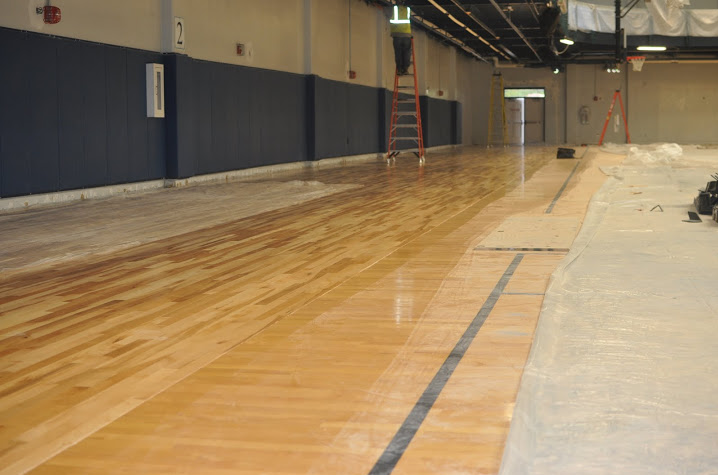Construction on gym almost complete- see details
The Student Recreation Center expansion is set for completion by the spring of 2013, possibly as early as January, according to Tim McNeilly, the director of Campus Recreation.
The total cost of the construction is $30 million. Every semester students pay their SRC dues with their student fees, mostly to cover financing and operating costs. McNeilly isn’t anticipating those dues to rise.
“We feel pretty confident that all our operating costs willbe covered by the current student fees,” McNeilly said.
The original SRC, which opened in 2000, was about 65,000 sq ft. The expansion brings the total gym space to 165,000 sq ft, with a 23,000 sq ft fitness center.
The original facility wasn’t built to serve enrollment, because campus recreation wasn’t able to get funding together in time, McNielly said during a presentation of the SRC expansion’s progress to the SGA.
The new facility includes two courts for indoors soccer, two additional exercise rooms including one dedicated to a spin class, two pools, racketball courts and three additional basketball courts. Club sports are also getting more space, and there will be three family changing rooms added.
With the new facility, there is a greater need for student employees: the number of students employed to run the programs is increasing from 150 students to 225-250 students.
McNielly expects the new facility to be LEED-certified, an environmental safety standard for new buildings. There are three levels to this status, and McNielly is hoping for gold, the second highest level. The U.S. Green Building Council will inspect the building to decide.
Some of the “green” features of the construction include energy efficiency, recycling of construction materials, and reduced water intake. The building is expected to have solar panels to supplement heating the pool, low-flow showers and toilets, and a sprinkler system that uses rainwater collected in the retention pond near the building.
Many students who contributed to the construction costs with their student fees have graduated or will graduate before getting to use the facility. A membership for $250 yearly will be available to students who graduated between the spring 2008 and spring 2013, for two years.







